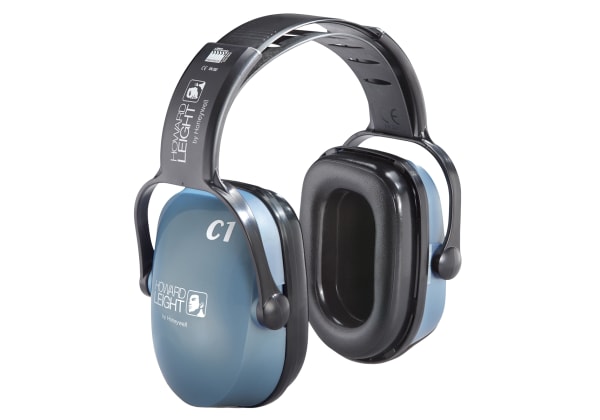- Published 18 Apr 2023
- Last Modified 29 Aug 2023
- 6 min
How to: Sound Level Meter Calibration
Do you need to calibrate your sound level meter? This guide will explain all you need to know.

Reviewed by Karl Ralph, Technical Support Engineer (November 2022)
Sound level meters are instruments for quantifying levels of sound. They are sometimes known as decibel meters (dB meters) or sound pressure level meters. So how do decibel level meters work? They are equipped with a microphone which is calibrated across the audio frequency range. The microphone responds to changes in sound pressure levels which are interpreted onto a digital display via internal electronics. The noise pressure levels are shown in decibels (dB).
You can use them in many environments where noise pollution needs to be monitored or controlled. One example is setting up sound or cinema systems in a public venue. Another is their use in the sound engineering environment. Frequency response and noise levels can be monitored. This will enable you to achieve balanced and quality music recordings.
How accurate are phone decibel meters and do we need a sound level meter? The answer to that depends on what you might want to use it for. Phone apps vary in quality and accuracy. Phones are not all made equal. The bandwidth and frequency response of the microphone being used will vary from one phone to another. When it comes to measuring sound levels with accuracy and consistency then a dedicated sound level meter is the way to go.
Our human ears perceive sound differently from the actual sound pressure levels present and typically they do not follow a flat frequency response curve. We tend to be more sensitive to frequencies of sound ranging from around 500 Hz up to around 8 kHz. For this reason, any meaningful sound pressure readings need to be weighted in favour of that frequency bandwidth. This is so that the sound that we are measuring is pertinent to the frequencies that we perceive the most.
There are three weightings used in sound level monitoring.
- (A) weighted - frequency of 500 Hz up to 8 kHz. This is the humans' most sensitive range and the most used scale. The units of measurement are termed dBA.
- (C) weighted - frequency of 31.5 Hz up to 8 kHz. This scale is used when high-energy bass or low percussive sounds are present; the human ear is more sensitive to lower frequencies at high levels. The units of measurement are termed dBC.
- (Z) weighted - frequency of 8 Hz up to 20 kHz. This is the audible flat frequency response curve. It is useful in the design of audio equipment and where wider, flat bandwidth measurement is necessary. The units of measurement are termed dBZ.
How to Use a Sound Level Meter

Modern sound level meters are generally portable and easy to use. Some of the more sophisticated data logging meters can record a range of readings that can be transferred to another device or computer for storage, analysis, and manipulation.
There is often the ability to select fast and slow responses. With the fast selection transient and peak sound levels can be monitored. Some meters will have a min-max feature where a snapshot of the quietest and loudest sounds can be captured. You will find this feature particularly useful when in fast response mode. The slow response mode is used when you need to monitor the average sound levels.
Either A, C or Z weighting can be selected. Once you have selected response speed and weighting the next step is often as simple as pointing the built-in microphone at the sound source and taking a reading from the display. It is important to use a windscreen over the microphone when using the meter in windy environments.
The health and safety executive has guidelines and limits for sound level safety, and you should use a calibrated sound level meter to set and maintain those limits to protect the hearing of anyone being subjected to excessive sound levels. Generally, anything below 75 to 80 dBA is considered a safe level but anything above that level can result in permanent hearing damage.
Below 80 dBA is the level set for most cinema complexes and similar venues. For working environments, the safe limit before needing to use ear protection is 85 dBA. This measure is useful for allocating safe working zones where ear defenders must be used in designated areas. For large concerts and festivals, the limit is set higher. For those venues, the advice is not to exceed 107 dBA. The C-weighted reading should not exceed 140 dBC.
You can use sound level meters in many environments including:
- Music concerts and shows
- Schools
- Engineering and industries
- Construction
- Sound equipment design
- Airports
- Cities and buildings
Why it’s Important to Calibrate
Calibrating your sound level meter is particularly important if you are using it to check levels or set up equipment in noise-regulated environments such as workplaces and public venues. The accuracy of meters can drift over time, and it is good practice to have your meter calibrated at least once a year. You can either use a calibration service or you can use a calibrator that will enable you to check the calibration of your instrument.
Most meters will have the ability to calibrate and set an offset within the operating menu. Some meters will allow for a mechanical adjustment using a screwdriver to adjust a variable resistor to calibrate to a known calibration source.
How to Calibrate a Sound Level Meter

Your calibrator can be used by simply switching on and attaching it to the microphone on your sound level meter. They are often designed to sound at a centre frequency of 1 kHz at a fixed sound pressure level. Usually, the output level is 114 dB, but some offer several output levels to choose from. These have the advantage of enabling you to check the sound pressure level accuracy at several points.
Once you have your calibrator connected and your meter turned on you can check that the reading shown by the meter matches that given by the calibrator. If it does not match, then you would need to delve into the calibration menu and offset the reading so that it matches. If your meter has an external screw adjustment, then the screw can be turned to match the screen reading with that of the calibrator.
Sound Level Meter Calibration Service
Our calibration service will ensure that your instrument is properly calibrated and is always operating at its best.
Further Reading
Related links
- Sefram SEFRAM9836 Sound Level Meter 8kHz max with RS Calibration
- Castle Sonus GA116i Class 1 Sound Level Meter 20kHz max
- RS PRO NDM1354 Sound Level Meter, 10kHz max with RS Calibration
- RS PRO NDM1354 Sound Level Meter, 10kHz max
- Castle Sonik GA242S Class 2 Datalogging Sound Level Meter 8kHz max...
- RS PRO Sound Level Meter 8kHz max
- Extech 407744 Sound Level Meter 1kHz max
- Extech Sound Level Meter, 40dB to 130dB


